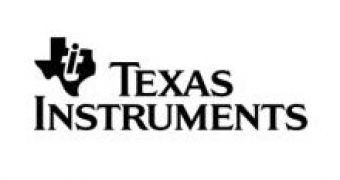As Wideband Code Division Multiple Access (W-CDMA) deployments continue to expand worldwide, Texas Instruments announced it is now looking beyond 3G to the Long Term Evolution (LTE) standard. An initiative of the Third Generation Partnership Program (3GPP), LTE encompasses higher data rates and flexibility in frequency allocations needed to support IP-based applications set to deploy between 2008 and 2012. In order to accelerate equipment manufacturers' time-to-market with LTE technology, TI has created a development ecosystem, combining its wireless infrastructure optimized digital signal processors, software libraries and ATCA/AMC cards from systems developers Mercury Computer Systems and Silicon Turnkey Express.
LTE, and the evolution of mobile communications systems, goes beyond the current GSM/EDGE and W-CDMA HSPA air interfaces. Current 3G networks support a mixture of voice and data traffic over the same circuit-switched network. Operating at peak performance, these networks can deliver speeds of 14.4 Mbps downlink or 5.76 Mbps uplink. Packet-based LTE is designed to offer peak speeds of 100 Mbps downlink and 50 Mbps uplink, making streaming media a viable reality on the handset.
"This is a tumultuous time for service providers as they strive to meet consumers growing demand for high bandwidth applications," said Godfrey Chua, research manager for IDC's wireless and mobile infrastructure service. "Although the LTE standard is not yet finalized, carriers' work must begin now to test and evaluate its potential. TI's LTE development ecosystem is the right approach and comes at the right time as it provides carriers and equipment manufacturers with sufficient lead time to meet potential deployment goals falling in the 2009/2010 timeframe."
Although the LTE standard has not yet been finalized, service providers are already planning for its trial. TI's development ecosystem provides original equipment manufacturers a preview into how their systems can support the LTE air interface. Leveraging the TMS320TCI6482 and TMS320TCI6487 digital signal processors, TI has created a series of designs leveraging system-level benchmarks. These benchmarks illustrate various system architectures to support existing 3G standards, WiMAX and LTE. The software library capitalizes on TI's existing WiMAX Wave 2 compliant library, with a host of LTE-specific algorithms. Combined, this hardware/software package provides a starting point for LTE development and enables faster and easier development of prototype systems.
The DSPs and benchmark configurations for LTE are available today, together with third party development platforms. The first release of the LTE software package will be available at the end of the second quarter of 2007, and will be updated throughout the year as the standard moves toward ratification.

 14 DAY TRIAL //
14 DAY TRIAL //